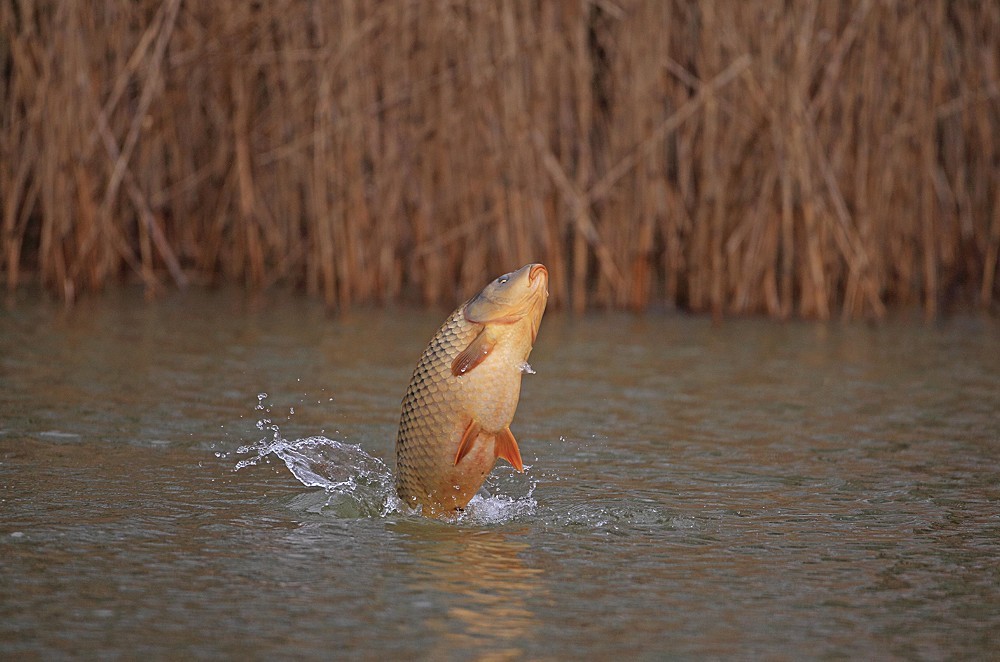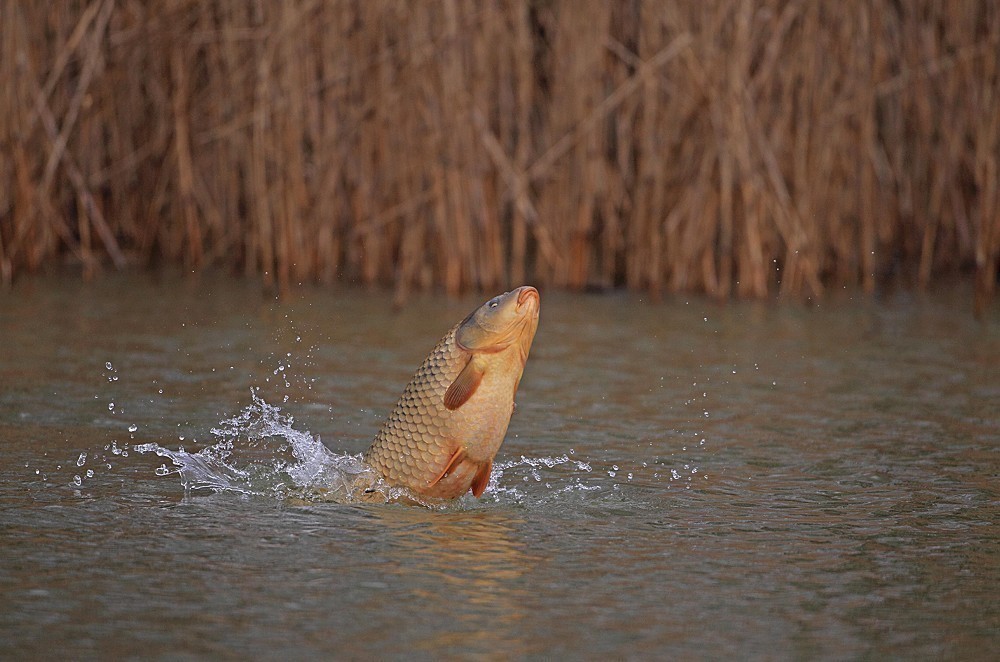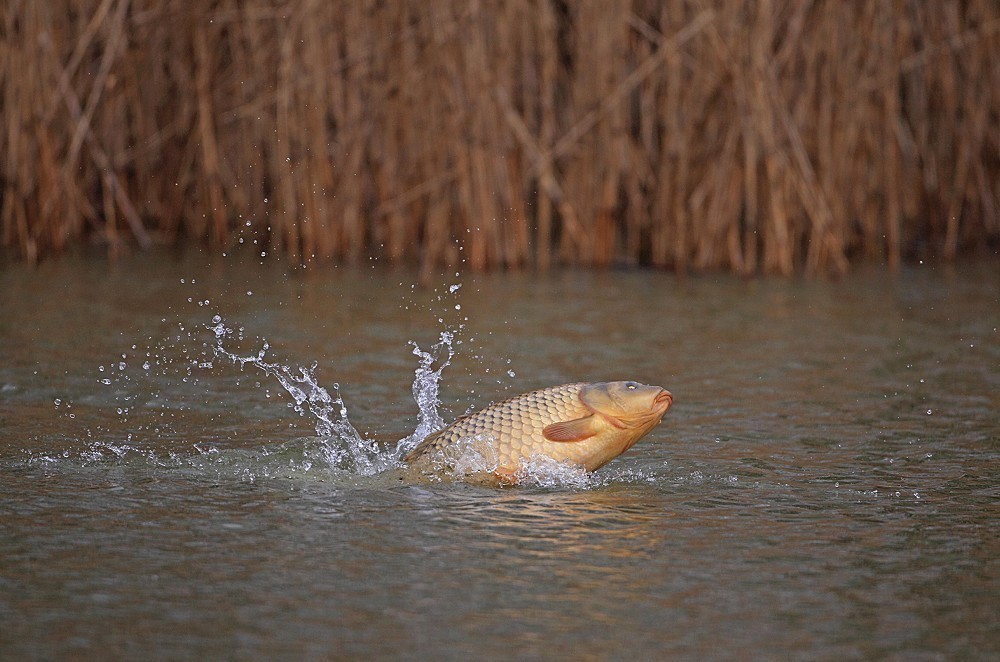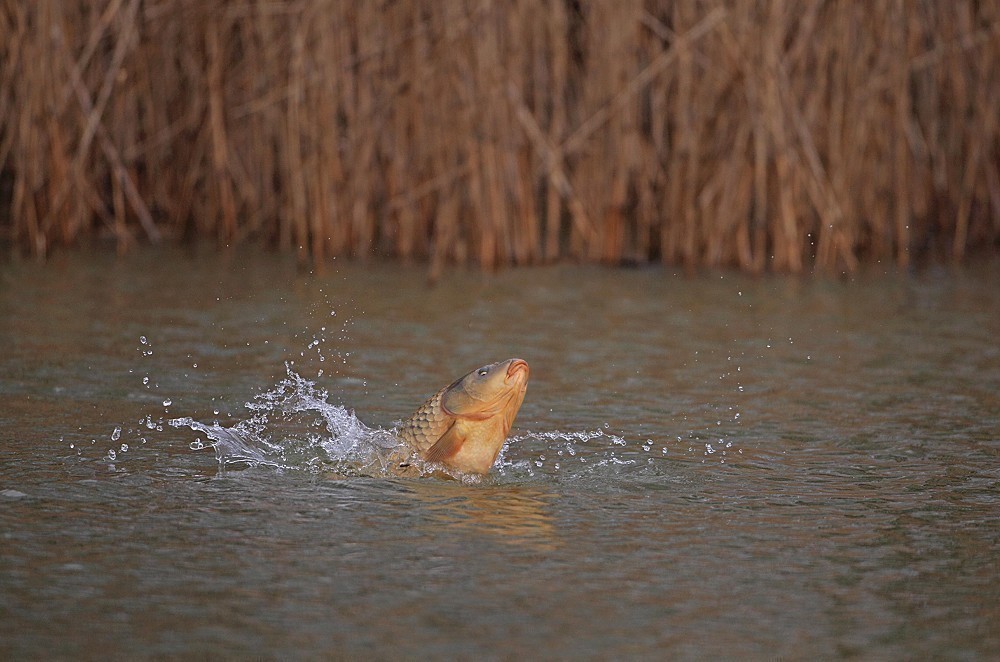
Understanding carp shows
What the biggest names in the game think on carp shows
Crashing
Shaun Harrison
REASON “In my opinion this is usually a cleaning up act. It’s possible they are clearing their gills of silt etc. but more likely trying to rid themselves of parasites which they get on them quite regularly.”
YOU DO… “Always worth a cast if they are doing this over a silty area as it may be indicating they have been feeding and there could still be others there. Have a cast at the end of the session with the marker to see if there was a reason they were crashing there.”
Julian Cundiff
REASON “I think they’re cleaning the gills and taking in oxygen. I have watched them from up a tree in Longfield in the eighties and you could literally see the silt flowing out of their gills and the oxygen being driven in. As I was with a very well-respected angler at the time and he pointed this out to me, that’s my best guess.”
YOU DO… “If I had a rod on that spot and I was happy that it hadn’t been rejected I’d leave it there. If not, I’d use the lightest possible lead and a single bait and put it in the rings. In summer I’d certainly get some chummies out there and in winter a Zig Rig.”
Nigel Sharp
REASON “Cleaning their gills or trying to rid themselves of parasites after they’ve been laid up for a while, unusually during the period between winter and spring.”
YOU DO… “I would probably cast at the fish; it’s an area where a fish has shown and it must be there for a reason, so it’s worth a chuck. In this situation I would just cast a single hookbait at the area.”
Iain Macmillan
REASON “Cleaning gills maybe?”
YOU DO… “Whilst this is a good sign in any area of your swim, I’m not so sure they are feeding fish, I think they may have already fed and are simply emptying out all the excess crap from their gills they’ve sucked in whilst feeding on the bottom, hence most of the time I’ve observed this I’ve never received much rod action when seemingly I’ve been bang on the fish!”
Head and shoulder
Shaun Harrison
REASON “Head and shouldering is my favourite observation as it often indicates feeding. However, it can also be caused by the bigger (fat ones) attempting to crash out but not having the momentum to leave the water so could just ridding themselves of bugs.”
YOU DO… “I always try and get a bait to fish that are head and shouldering. If possible overcast the fish then wind the lead back quickly to drop amongst the fish without the splash. Again, have a cast with the marker rod at the end of the session.”
Julian Cundiff
REASON “I am convinced this is fish rolling over bait and feeding on it. When I see this I am convinced that it’s either fish on the bait or moving towards an area to feed on.”
YOU DO… “If the rod was where it head and shouldered I’d not move it. If it wasn’t and the fish continued to show I’d do the same as above. However, if the fish was moving in a certain direction I’d place it straight in their ‘anticipated’ line of travel.”
Nigel Sharp
REASON “Quite often it’s a moving fish.”
YOU DO… “I would watch the area intently to see which way it was moving – left or right. If it’s apparent they’re on the move, I would then up sticks and try and get ahead of them to get the traps set.”
Iain Macmillan
REASON “Proper feeding behaviour!”
YOU DO… “This, along with head poking is my favourite type of shows, I firmly believe when the carp are acting in this manner they are at their most catchable. Some big fish I’ve watched before do shake their heads from side-to-side whilst head and shouldering which can give the impression they are crashing, I reckon it’s a bit of a mixture between the two styles as some really big fish aren’t able to completely clear the water due to their bulk, but when they are head and shouldering stand by your beds.”
Roll
Shaun Harrison
REASON “How it is illustrated I would interpret as moving/travelling fish.”
YOU DO… “Watch carefully and you may see others doing the same which will then indicate which direction they are moving – try and anticipate where they are heading and move quickly to be able to get rigs in place before they arrive.”
Julian Cundiff
REASON “I think this is fish on the move. Almost always I see them roll in one spot, the next roll will be in a slightly different spot as though the carp are on the move. The fish are not feeding as such in that spot in my opinion.”
YOU DO… “I wouldn’t chase that fish around but I’d try to anticipate where the fish was heading in relation to my knowledge of the water. I’d put a bait to where I’d think they’d be but not on their head.”
Nigel Sharp
REASON “It’s quite often a fish showing over a spot it’s been feeding on.”
YOU DO… “It’s obvious really – it’s a clear sign that it’s a feeding area/spot, so you need to get a bait onto it. I might overcast and then slowly lower the lead down, which will reduce the chances of spooking it/them.”
Iain Macmillan
REASON “Fish on the move.”
YOU DO… “On deeper lakes like Monks Pit I firmly believe the only way to catch fish that are behaving like this is to fish Zig Rigs in and around them. I liken it to dolphins moving in a pack and very often you can see which way the fish are heading by the way they are flinging themselves out of the water – i.e. which way their heads are facing when rolling. I’d most definitely cast three Zigs to the general vicinity with hookbaits such as cork, black foam and yellow foam.”
Head poking
Shaun Harrison
REASON “Almost always feeding fish, probably coming up through clean water to rid their gills of debris before dropping back down and feeding again.”
YOU DO… “Get a bait amongst them as soon as possible and make a note of the time of day as well as the exact area. This sort of feeding will be repeated – carp are very much creatures of habit. Remember to check the area out later with the marker rod.”
Julian Cundiff
REASON “Feeding on that spot usually. When I see that subtle sign I am usually very confident that a fish has been down on the feed and is about to go down again.”
YOU DO… “If the rod was in place nothing, but if I’d had a bleep and felt I’d been done I’d re-chuck. Again, using the lightest lead possible and if possible, overcast and let it swing into position. As an aside, if I see any of those signs in open water I’d always draw it on my map of the water making sure I knew where it was with a far bank sight line.”
Nigel Sharp
REASON “The same as rolling – it’s usually a sure sign that it’s been feeding in the area.”
YOU DO… “I would want my bait there! I would also make a note of the area it showed in, as carp are creatures of habit and will often feed in the same spot over long periods of time. It’s also worth investigating the area further with a marker rod after the feeding activity as decreased.”
Iain Macmillan
REASON “Lightly feeding.”
YOU DO… “I’ve witnessed this happening on two lakes in the early spring: St Johns down at Linear fisheries and Wellington Country Park. Now I think when the fish are doing this they haven’t long been out of their winter slumbers and have maybe dined lightly on old bait. They then gently poke their snouts from the surface to vent their gills. You have to watch the water all of the time to witness this as there is zero splash, which tells me they are trying to be very discrete in their actions, hence me believing they are feeding very, very lightly. Maybe in this case a Stick or mesh bag would tempt a bite, but you don’t need a lot of bait in this instance.”







